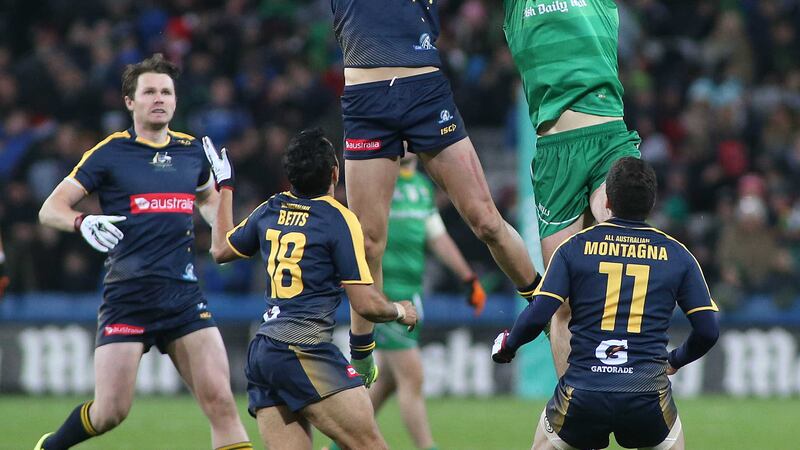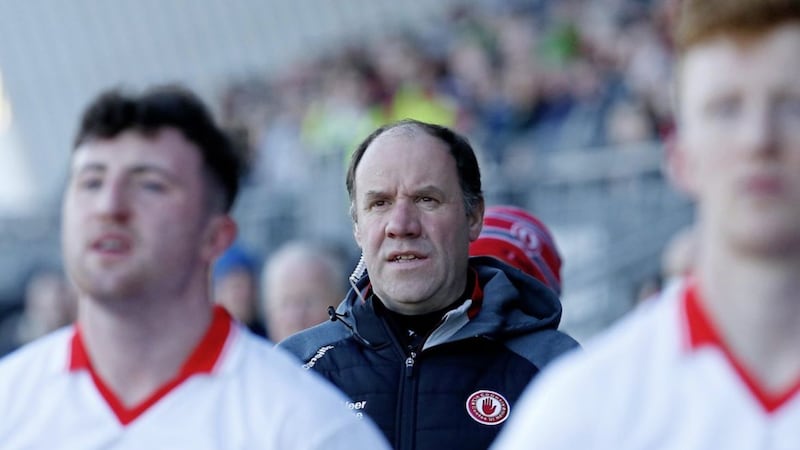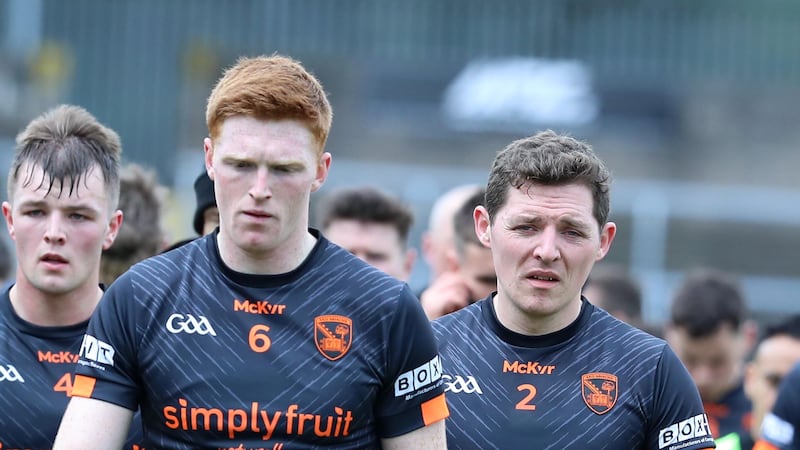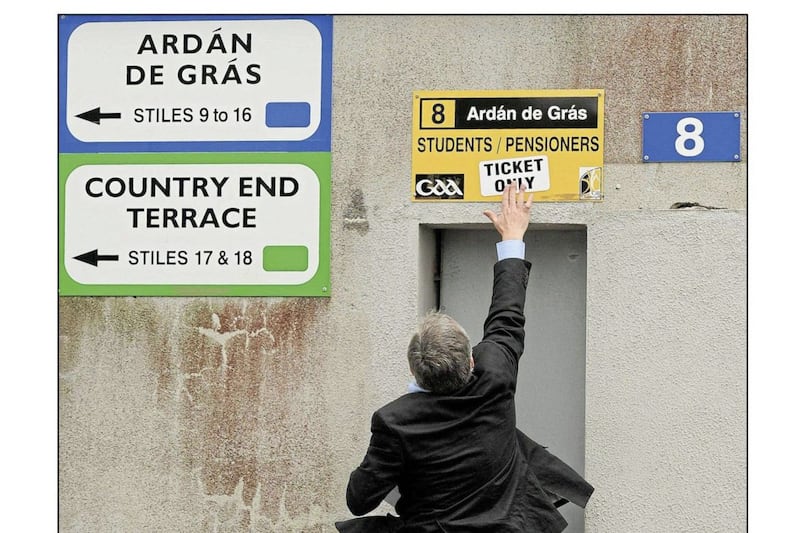THE history of sport suggests that the GAA’s current defensive issues are pointing towards an irreversible trend.
Soccer used to be played with abandon. Everyone had a 2-3-5 formation. The goals poured in. 8-5, 6-4, 7-3. Those scorelines were common in the top flight of English football.
Then came catenaccio and as its influence spread, the game changed. Now everyone plays 4-5-1 with two holding midfielders.
The country goes mad for a 3-3 draw these days. In rugby, the balance of power has shifted from the backs to the forwards.
Saracens are a recent and very powerful example. They were awarded three penalty tries in a recent Premiership game against Leicester, simply off the brute force of their pack.
They are branded an ugly team, styleless, but they will quite possibly end the season as English and European champions.
Ireland have won back-to-back Six Nations titles with an almost blanket ban on offloading. Do the basics, keep the shape, and win 9-7 if necessary.
Even individual sports are affected. Novak Djokovic won the Australian Open title at a canter on Sunday. Why is he the best out there at present? Because his defensive game is phenomenal. He wins rallies that others don’t stay in.
Boxing. Why did Floyd Mayweather end his career unbeaten? Because no-one could lay a glove on him. The list of examples you could point to is almost endless. Sport is now orchestrated primarily by defence.
Gaelic football started to catch up about 20 years ago, and its transformation is almost complete. There are still those out there who have not caught up. They believe that attacking football will pay.
Such a view is commendable, but groundlessly optimistic.
Even a team as good as the current Dublin side found out that they needed their defence in order before their attack could carry its worth.
The teams that will come anywhere near an All-Ireland this year all play with massed defences. The side that will win it will not necessarily be the one with the best players.
Instead, it’s the side that best masters the arts of defence and counter-attack. One of the suggestions to bring back the so-called good old days is the idea of the mark.
It comes from the obsession of GAA spectators who always believe the grass is so much greener somewhere else. The Australian Football League has arguably the most spectacular high-fielding of any sport in the world.
You can watch montage upon montage on YouTube of men almost literally standing on the shoulders of giants to propel themselves at the ball. But those montages don’t show the 30 seconds that follow.
The man picks himself up, has a look around and decides not to go for the quick one. He decides to have a go at goal, so he walks 15 yards backwards and then lines himself up for a free shot.
The volume of such incidents slows Australian Rules football up something shocking. Instead of a force for good, it has become a vehicle for running down the clock.
Given that it is only proposed that it be used from kick-outs in Gaelic football, there is hope to suggest it wouldn’t have the same impact on the speed of our game.
But what’s being overlooked amid the battle to offer a reincarnation of the cloud-held battles of yore is that its introduction would probably do further damage to the game as an attacking spectacle.
There seems to be this notion that introducing the mark to Gaelic football would force teams to come out and contest the kick-outs mano-a-mano, and there would be this bounty of space in front of the full-forward lines for the early kick as a result.
But remember, defence pays. Teams simply wouldn’t commit men to the middle of the field. It would arguably serve to make the game more defensive, because teams would feel that the risk of competing for the kick-out and losing is too great.
The shape of the game has already altered to allow so many short, uncontested kick-outs. Introducing a mark will make that an even more pronounced feature of the game.
Take the Tyrone v Kerry semi-final last year (I know, I call on it so often you’d think it was the only game of football I’d ever seen).
Kerry set out to hit their kick-outs long, to try and get high up the park as early as they could. But Tyrone’s good start to the game was founded on the fact that Brendan Kealy simply refused to kick the ball to the spare men in his defence.
The white shirts flooded back, conscious of the way Kerry can transport the ball so quickly with the foot. Tyrone never allowed them to find their inside forward line because they had their full-back line so well protected at all times.
Three, four times early on, Kealy thumped it long over the heads of a full-back line that was standing all on its own. Tyrone either won the possession because of their weight of numbers, or they turned it over because Kerry were running into occupied space.
The Kingdom only got their foothold in the game once they abandoned that plan and their goalkeeper started to just chip the ball 10 yards to the nearest man.
The guarantee of possession will always appeal to managers more than the 50-50 battle. Certainly far more than a 40-60 battle. And so, in the big games where you want to see its impact, the mark would be absolutely obsolete as an attacking weapon.
You don’t want to be negative about such a well-intentioned idea. As a supporter, I would truly love to believe that it would have the intended effect. There is no question that those behind it have the best intentions at heart. But the reality is that Gaelic football has evolved beyond that.
There is only one way to reverse the trend, and that is to insist on a certain number of men staying inside the opposition 45 at all times. That, though, is unpoliceable.
All sports go down this path eventually. This is just the way things are, and the way they will continue to be.









